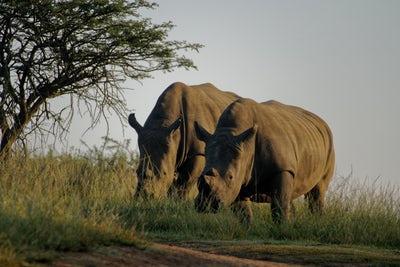In my previous blogs, I have mostly discussed technology-related subjects, but in this one I would like to discuss something that is very dear to me; the rhinos of Africa, our rhinos!
Rhinos are one of my favourite animals. The White Rhino especially is a great symbol of hope – in the 1950s, there were less than 100 of them left in the world, and currently the population is estimated at around 20,000
The sad thing is that their numbers are again declining rapidly due to severe poaching. If something is not done to stop it, these magnificent animals might be lost forever in less than 10 years.
To understand the potential solutions, it is important to first understand the problem and what drives it. Poaching is a very lucrative business. Rhino horn trades on the black market for between USD 60,000 and USD 70,000 per kilogram.
The reality is that the black market can only thrive when there is a demand and it is not legal to get the relevant product via legal trade. By banning the legal trade, the illegal trade is stimulated, as is very clear from the rhino poaching stats for South Africa from 1991 to 2017 shown below.

If you know me or have been following me for a while, you will know that I believe in business-as-a-tool (BaaT) to solve the world’s problems. I believe that if you can solve a problem at a profit, you have a sustainable solution.
I cannot help but see my BaaT conviction as the only sustainable way to save our rhinos and let them thrive. All the elements are already there; a huge demand from customers who are willing to pay a premium and a sustainable way to supply that demand.
Before you think that I am suggesting that we kill rhinos to sell their horn, I have this great fact to share: a rhino’s horn grows between 100mm and 150mm per year, producing between 0,75 kg and 2,5 kg of horn annually. In fact, it has become common practice to trim off the horns of all adult rhinos to make them less attractive for poachers. What this means is that rhino horn can sustainably be produced and trimmed on an annual basis, almost like clipping your toenails on a regular basis.
I know there are several people who will at this point get very irritated. Why don’t we just educate the current Asian consumers (of rhino horn) about viagra or chemo that actually works better than rhino horn? The reality is that this effort will be like convincing a Christian or Muslim that there is no God, or a sangoma (traditional African healer) that mutti does not work. My view is simple; one must respect these traditions and, while these beliefs are held, rather use them to generate funds to continue to breed more rhinos.
I am convinced that there is a huge opportunity to create several sustainable businesses from breeding and protecting rhinos across Africa. If communities and investors join forces, with investors providing the capital to buy rhinos and communities the land, what a beautiful solution this can be.
If you agree and would like to get involved, please contact me. Please feel free to share this article.
Rhinos are one of my favourite animals. The White Rhino especially is a great symbol of hope – in the 1950s, there were less than 100 of them left in the world, and currently the population is estimated at around 20,000
The sad thing is that their numbers are again declining rapidly due to severe poaching. If something is not done to stop it, these magnificent animals might be lost forever in less than 10 years.
To understand the potential solutions, it is important to first understand the problem and what drives it. Poaching is a very lucrative business. Rhino horn trades on the black market for between USD 60,000 and USD 70,000 per kilogram.
The reality is that the black market can only thrive when there is a demand and it is not legal to get the relevant product via legal trade. By banning the legal trade, the illegal trade is stimulated, as is very clear from the rhino poaching stats for South Africa from 1991 to 2017 shown below.

If you know me or have been following me for a while, you will know that I believe in business-as-a-tool (BaaT) to solve the world’s problems. I believe that if you can solve a problem at a profit, you have a sustainable solution.
I cannot help but see my BaaT conviction as the only sustainable way to save our rhinos and let them thrive. All the elements are already there; a huge demand from customers who are willing to pay a premium and a sustainable way to supply that demand.
Before you think that I am suggesting that we kill rhinos to sell their horn, I have this great fact to share: a rhino’s horn grows between 100mm and 150mm per year, producing between 0,75 kg and 2,5 kg of horn annually. In fact, it has become common practice to trim off the horns of all adult rhinos to make them less attractive for poachers. What this means is that rhino horn can sustainably be produced and trimmed on an annual basis, almost like clipping your toenails on a regular basis.
I know there are several people who will at this point get very irritated. Why don’t we just educate the current Asian consumers (of rhino horn) about viagra or chemo that actually works better than rhino horn? The reality is that this effort will be like convincing a Christian or Muslim that there is no God, or a sangoma (traditional African healer) that mutti does not work. My view is simple; one must respect these traditions and, while these beliefs are held, rather use them to generate funds to continue to breed more rhinos.
I am convinced that there is a huge opportunity to create several sustainable businesses from breeding and protecting rhinos across Africa. If communities and investors join forces, with investors providing the capital to buy rhinos and communities the land, what a beautiful solution this can be.
If you agree and would like to get involved, please contact me. Please feel free to share this article.





